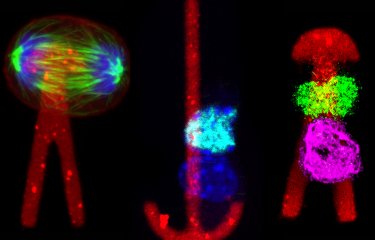The department develops multidisciplinary approaches aimed at meeting the world's public health challenges for infectious diseases and antimicrobial resistance. Activities focus on epidemic, pathogen and emerging disease surveillance. The scientists work closely with teams from the Global South (including the Pasteur Network) and other international partners on every continent. Many projects follow the One Health approach that recognizes the interconnectedness of human, animal and environmental health. The department’s areas of expertise lie at the interface of epidemiology, mathematical modeling, genomic and molecular analysis, pathophysiology, medical anthropology, health surveillance, and ecology. The department houses National Reference Centers, WHO Collaborating Centers and European reference laboratories for public health.
Our main recent publications
The impact of variants and circumstances of infection on the COVID-19 incubation period
The ComCor study investigates the circumstances of SARS-CoV-2 infection. Using data from 20,000 individuals who had a single encounter with an infected person, scientists discovered that the COVID-19 incubation period was one day shorter for Omicron than for the historical variant, and when the contact person was symptomatic, suggesting that a higher infectious dose of the virus could shorten the incubation period.
The Lancet Microbe, April 18, 2023.
Enteric viruses with similar genomes in humans and great apes
This study has revealed a high degree of convergence between the genomes of enteric eukaryotic viruses in humans and great apes in a Cameroonian forest. Fields were identified as a platform for viral sharing between humans and great apes in the central African forest. Observations made in the field in Cameroon were compared to a European zoo. This research was coordinated by Tamara Giles-Vernick in collaboration with the CNRS, the Pasteur Center in Cameroon and Saint-Louis Hospital.
Nature Communications, June 21, 2023.
The SARS-CoV-2 virus can migrate within neurons and infect the brain
Scientists at the Institut Pasteur and Université Paris Cité have demonstrated a characteristic common to several SARS-CoV-2 variants: the ability to infect the central nervous system. The study also confirms that SARS-CoV-2 is capable of infecting human neurons in vitro and migrating into nerve cell projections that carry information.
Nature Communications, July 26, 2023.
Hospital vulnerabilities to outbreaks caused by respiratory pathogens
Airborne transmission of viruses such as SARS-CoV-2 and influenza occurs very frequently in hospitals. We studied close proximity interactions using portable transponders distributed to all the individuals in 15 clinical departments in Paris, Lyon and Bordeaux from April to June 2020 (>2,000 participants). The data were used to simulate epidemic risk, which varied by a factor of up to twenty between the departments when new infections were introduced. The study opens up new avenues for research on the risk of airborne transmission of hospital-acquired infections.
Scientific reports, February 14, 2024.
Using genomics to trace the evolution of Salmonella
Scientists used sequencing to study more than 500 strains of Salmonella Paratyphi B, the agent responsible for paratyphoid B fever, to trace its evolution since the first cases were identified in 1896. Paratyphoid B fever was common in Europe until the 1960s and remains present in some world regions. The study also led to the development of genomic tools to identify the pathogen more effectively and monitor its spread.
Nature communications, December 10, 2024.





